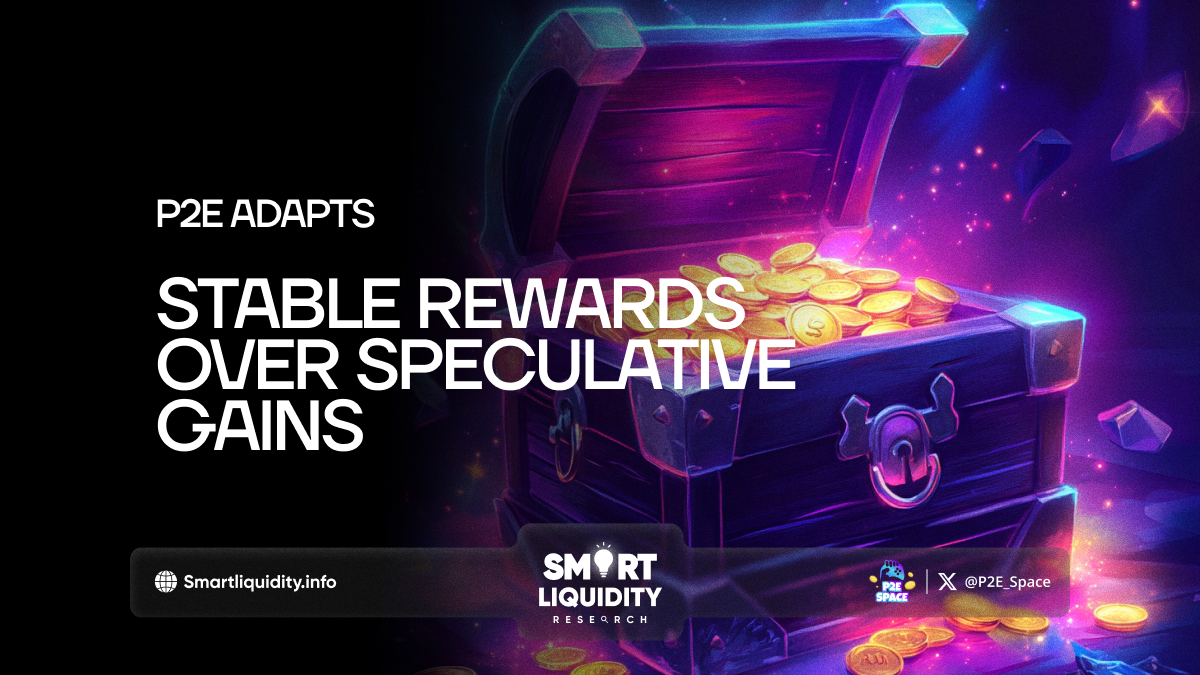P2E Adapts: Stable Rewards Over Speculative Gains


The Play-to-Earn (P2E) gaming industry is evolving at an unprecedented pace. Once driven by high-risk, high-reward speculative assets, the landscape is shifting toward sustainability, ensuring long-term engagement and value for players. The era of volatile earnings and market-driven hype is gradually giving way to a more stable and predictable rewards system. But what’s behind this transformation, and how does it benefit the players and developers alike?
The Rise and Fall of Speculative P2E Models
In the early days of P2E, players flocked to blockchain-based games, enticed by the promise of lucrative returns. Games such as Axie Infinity skyrocketed in popularity, with in-game assets valued at staggering prices. However, as the market became oversaturated and unpredictable, many players faced substantial financial losses when speculative assets lost value overnight.
The unsustainable model of play-to-earn led to disillusionment. Those who entered the ecosystem purely for financial gains often found themselves at the mercy of fluctuating token prices, leading to rapid abandonment when rewards diminished. This instability forced developers to rethink their approach to the economic framework of P2E gaming.
The Shift Toward Stability
To ensure the longevity of blockchain games, developers are moving towards stable rewards systems. This transition prioritizes sustainable in-game earnings rather than speculative market-driven gains. The focus is now on creating:
- Balanced Economy Models – By reducing the reliance on volatile tokens and introducing in-game utility for rewards, developers can stabilize earnings for players.
- Ecosystem-Driven Rewards – Rather than pegging rewards to external market factors, P2E games now incorporate non-fungible tokens (NFTs), digital assets, and in-game currencies that hold intrinsic value within the game’s ecosystem.
- Skill-Based Earnings – Games are increasingly rewarding players based on skill and participation rather than pure financial investment, ensuring fairness and meritocracy.
- Hybrid Revenue Streams – Developers are integrating subscriptions, advertising, and traditional gaming monetization models to create additional income sources that support player rewards.
Why This Matters for Players
For gamers, this shift to stable rewards over speculative gains brings several advantages:
- Reduced Financial Risk – Players can engage with P2E games without the fear of losing significant investments due to market crashes.
- Fairer Earning Potential – A more stable economic model ensures that earnings are based on gameplay rather than market speculation.
- Long-Term Enjoyment – With a focus on engaging gameplay rather than pure profit, games become more immersive and rewarding in the long run.
A Win-Win for Developers and the Industry
Game developers benefit immensely from this transition as well. Sustainable reward systems encourage player retention, reducing the churn rate that plagued early P2E models. Additionally, by focusing on intrinsic gameplay value rather than financial speculation, developers can attract a broader audience, including traditional gamers who previously hesitated to enter the blockchain gaming space.
The Future of P2E: A New Era Begins
As the industry moves away from unstable speculative gains, the future of P2E gaming looks brighter and more sustainable. With stable reward systems, skill-based earning mechanisms, and ecosystem-driven incentives, blockchain gaming is maturing into a space where players and developers alike can thrive.
This evolution signifies the maturation of P2E gaming, proving that long-term success lies not in fleeting financial hype but in creating meaningful, rewarding experiences for all players.
REQUEST AN ARTICLE
Disclaimer: The information provided in this article is for educational and informational purposes only. It does not constitute financial advice, and readers should conduct their own research before engaging with blockchain gaming or cryptocurrency-related activities.




